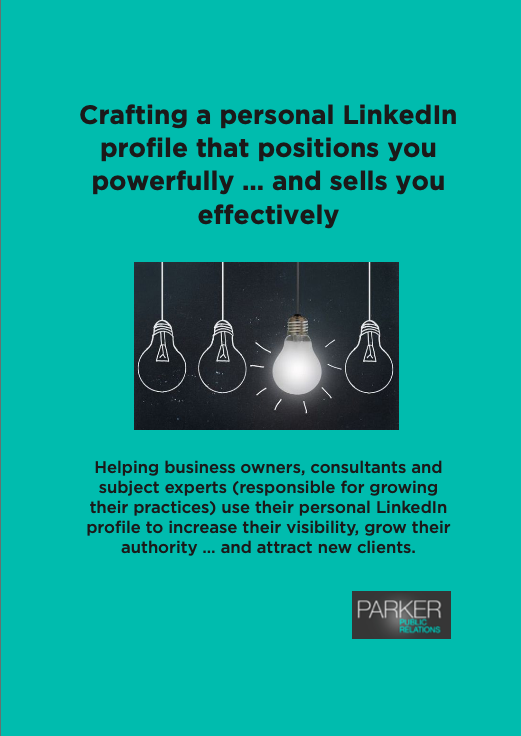
With our ever changing media landscape, we’re struggling to keep abreast of what it is that appeals to journalists. What precisely should we be doing to secure much sought-after coverage?
The findings from the latest Cision 2019 State of the Media Report (which surveyed 1,999 journalists around the world) show that while some things have changed in terms of what the media wants, others have remained very much the same.
Media releases are still the most trusted form of content
When Cision asked journalists what content they like to receive from brands, a whopping 71% said that news announcements and media releases outranked other forms of content, with invitations to events and original research reports coming a close second.
With this finding in mind, how can we write a media release that captivates the attention of journalists, effectively conveying much needed information while at the same time better reflecting the modern needs of journalism?
In nutshell, journalists want media releases that:
- Are relevant to their target audiences. A horrifying 75% researched by Cision said less than a quarter of the pitches they received were relevant or useful. This suggests that companies and brands often overlook, ignore or don’t understand the target audiences of the journalists they are contacting. Key take-out: Do your research and ensure the story you are offering a media outlet is pertinent to its readers, viewers and listeners. Failing this, you risk your story going straight into the bin or worse, journalists not taking you seriously.
- Media releases that are highly customised. 65% of journalists don’t want a mass produced media release but something that is customised to the needs of their audiences. Key take-out: Make sure that when you are writing a media release you have an audience in mind.
- Include a strong news-hook*. A news-hook is that critical piece of newsworthy information that will not only capture the attention of the media but will ensure your story gets used. News-hooks can include research, trends, linkages with what is happening in the external environment, new developments, evergreen stories and so on. Key take-out: a news-hook does not try to sell something but puts real and relevant news in front of the reader and encourages them to learn more about you and your brand.
- Avoid industry and marketing jargon. Journalists strongly recommend against industry and marketing jargon. Key take-away: Keep it simple and easy to understand. If it is absolutely essential to introduce some jargon into your media release, ensure you provide readers with a simple explanation of what the jargon means.
Include multi-media with media releases
We live in a predominantly visual world so do send out multi-media with your releases.
When it comes to exactly what, the latest Cision research places images and useful infographics are the preferred visual media … not video. Key take-away: Companies may not need to spend the extra resources developing video for their pitches. Instead, focus on high-quality, relevant imagery and creative ways to display data.
Ensure your facts are correct
Thanks to fake news, journalists have to work harder than ever to gain back the trust of their audience. To assist them in this regard, make sure that all the information you provide is 100% sincere, honest, and true. It might be tempting at times to embellish — but if the smallest detail proves untrue or is overly exaggerated; it could potentially cast doubt on the rest of your information.
This goes beyond the veracity of your media release or pitch. Every part of your brand — including your website, blog, and social media profiles — should be a sincere and truthful representation of your company.
Key take-away: A good tip would be to provide expert sources which journalists can turn to in order to confirm your facts and figures. Have all of your sources lined up and ready to go for journalists should they need to reach out.
*What constitutes a great news hook?
A news hook highlights what it is that makes the story valuable to an audience. Here are a few ways to create an effective hook:

- Include some captivating research. Use surveys to craft story ideas. The media views quantitative data as newsworthy, accurate, and sidebar-friendly. Launch a survey, or piggyback on survey results that relate to your industry to create a strong story. If you are launching your own survey ensure it has enough respondents to make it useable. Listen to the questions your clients and customers ask you – this could provide some research ideas moving forward.
- Is there something trending in your industry? If you are on Twitter, are you noticing a trending topic that relates to your business? A trend may be starting that you can tie into and make comment on to targeted journalists or bloggers.
- Draw a link with what is happening in the external environment. Scan media headlines then ask yourself what news ties in with what you want to promote or talk about in your media release.
- Are their new developments in your field that you can provide comment on or develop into a story angle?
- Evergreen stories provide topical news hooks. Think about financial year-end, Xmas, even political elections. All provide great fodder for strong stories.
In this day and age, journalists are busier than ever — and finding a good story can be a challenge. So if you want to give journalists what they really want:
- Focus on being relevant and targeted with your outreach.
- Understand who a media outlet’s audience is
- Make sure you have a strong news hook
- Deliver clear and concise pitches
- Provide information, backed up with data, images, and expert sources


